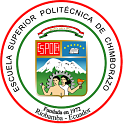Spatial Measurements in the Frequency Band from 944 MHz to 951 MHz in the city of Riobamba
DOI:
https://doi.org/10.47187/perspectivas.4.1.147Keywords:
Keywords- Telecommunications, Electromagnetism, Mapping, Electromagnetic Waves.Abstract
Abstract- Spatial measurements were obtained in a sector of the city of Riobamba divided into 46 measuring nodes, using the NARDA SRM-3000 and a wooden stand that simulates Duke’s Virtual Family model. The data obtained were used to determine the maximum, minimum, mean, and standard deviation electric field strength values for each measuring node. Later, by using flat wave theory the values of magnetic field intensity and power density were obtained to compare these values with existing ITU international standards, , specifically in its recommendations K.52 and K.61, which are based on the regulations of the ICNIRP, and those in force in Ecuador regulated by the ARCOTEL. After collecting, processing, and analyzing the data, these were tabulated into three tables, one for each value obtained considering Electric Field, Magnetic Field and Power Density; The maximum numerical value of each of the three tables was then chosen to compare with the ITU, ICNIRP and ARCOTEL standards. It was determined that the values for both electric field intensity, magnetic field intensity and power density obtained from the 46 measuring nodes do not exceed the established limits of the regulations. It is recommended that spatial measurements be carried out according to the parameters established by the regulators and that the same procedure be carried out in different areas of the city of Riobamba. The data obtained in this article will be used to carry out other studies focused on determining the SAR for whole body and 10 grams and perform an electromagnetic mapping of the measurement sector of the city of Riobamba.
Métricas
References
Harris B.E., The New Telecommunications Devel-opment: Bureau of the International Telecommu-nication Union, American University International Law Review Vol. 7 no. 1. (1991): 85.
Lyall F., Posts and Telecommunications, in: Schachterjoyner (eds.), United Nations Legal Order, Vol. 2, Cambridge 1995, p. 805.
Hinricher J., The Law-Making of the International Telecommunication Union (ITU) - Providing a New Source of International Law? Max-Planck-Insti¬tute, 2004, p. 495.
V. Psyk, D. Risch, B.L. Kinsey, A.E. Tekkaya, M. Kleiner, Electromagnetic forming – a review, J. Mater. Process. Technol. 211 (2011) 787–829.
M.A. Bahmani, K. Niayesh, A. Karimi, 3D simulation of magnetic field distribution in electromagnetic forming systems with field-shaper, J. Mater. Process. Technol. 209 (2009) 2295–2301.
Buffat, R.. Feature-aware surface interpolation of rooftops using low-density Lidar data for photovoltaic applications. In: Sarjakoski, T., Santos, M.Y., Sarjakoski, L.T., editors. Geospatial Data in a Changing World. Lecture Notes in Geoinformation and Cartography; Cham: Springer; 2016, p. 337–350.
ICNIRP, International Commission on Non-Ionizing Radiation Protection, Guidelines for limiting exposure to time-varying electric, magnetic, and electromagnetic fields (up to 300 GHz), Health Phys. 74 (4) (1998) 494–522.
W. Joseph, L. Verloock, F. Goeminne, G. Vermeeren, L. Martens, Assessment of general public exposure to LTE and RF sources present in an urban environment, Bioelectromagnetics 31 (7) (2010) 576–579.
Infante Pedro, Gilart Gonzalez. A 14-points array as a more realistic spatial averaging on the RF fields over the human body. RIELAC, Vol. XXXIX 3/2018 p. 16-30.
Downloads
Published
How to Cite
Issue
Section
License
Copyright (c) 2022 Pedro Severo Infante Moreira, Jordan Sebastián Huilca Logroño, Jordan Huilca, Alexandra Flores, Daniela Carrasco, Fidel Gilart

This work is licensed under a Creative Commons Attribution 4.0 International License.
Copyright
The authors of the manuscripts will retain their copyright on their articles published in Pespectivas Journal. These rights allow the authors to present their manuscripts in public, prepare derivative works, reproduce them physically by printing and distribute them on their social or research networks. These rights will remain unchanged as long as the authors respect the publication and free access policy of Perspectivas Journal.
Publication Rights
Perspectivas Journal reserves all first publication rights on each of the articles that the authors have sent to its review and publication process. It implies that authors will only exercise their copyright if they state the source and origin of the publication correctly, mainly when they distribute, share, present, or use their articles' total or partial content.














